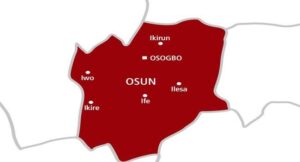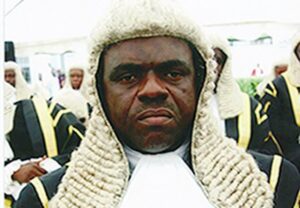Modern Trends in Sports Administration and Management
Author: Joseph Awoyinfa
Publisher: RBPC
Reviewer: Goke Ilesanmi
The multiplicity of challenges plaguing the Nigerian sports sector todayreadily inform the choice of this book entitled “Modern Trends in Sports Administration and Management”for review this week. It is written by Professor Joseph Awoyinfa of the Department of Human Kinetics and Health Education, Faculty of Education, University of Lagos.
According to Awoyinfa, it is a truism the world over that sport is now a reference issue which can no longer be ignored at various sectors of the economy and spheres of life. This author adds that this text thus takes a critical look at topical issues in sports administration and management, dwelling on theories and principles of modern trends in sports administration and management such as leadership, organisation, planning, motivation, etc.
Structurally, this text is segmented into 16 chapters. Chapter one is christened “The concept of sports management”. Here, Awoyinfa says management is a long-standing concept of interest, implying different things to different people at different times, having elasticity of interpretations, thus leading to multiplicity of definitions. He explains that management has been variously described as an art, a science, a person or people, a discipline and a process.
On whom a sports manager is, this author educates that a sports manager is anyone at any level of sport organisation who directs the efforts of other people towards the achievement of organisational goals sport-wise.
Chapter two is based on the subject matter of evolution and trends of sports management thought. Here, Awoyinfa discloses that the development of thoughts on sports management dates back to the days when people first attempted to accomplish goals by working together in a group. He says since the turn of the 20th century, writers on sports management and business theory have been propounding different theories about how to manage work and personnel more efficiently and effectively. This author explains that the three main schools of management thought are: The classical; the human-behavioural; and the integrative.
Chapter three is thematically labelled “Principles of sports management”. In this chapter, this educational consultant explains that sports principles are the basic laws on which the practice of sports management is built. He adds that management principles must therefore be based on general terms for them to be applicable within sport organisations of varying sizes and character. “Modern sports managers and administrators are expected to be able to identify and use appropriate principles that are relevant to particular situations. This is because no single principle can suit all administrative situations,” submits Awoyinfa. He says the fundamental principles of sports are those applicable to all sports organisations and as a result of their general acceptability, they are sometimes referred to as “Universal principles of sports management”. This author expatiates that some of these principles are: responsibility; delegation of authority and communication.As regards humanitarian principles of sports management, Awoyinfa identifies these as democracy, justice, human relations, sympathy, empathy, consideration and humility.
In chapter four based on the concept of behavioural and motivational theories in sports organisation, this author says human beings are unique creatures as they behave differently under different conditions and are mostly difficult to predict. Awoyinfa stresses that since human beings constitute the most important element in sports organisation, sports managers need some understanding of why people behave in one way or the other, so that they (sports managers) can influence people to perform exactly the way sports organisation finds desirable.
One potent instrument this author suggests that can be used to elicit performance in athletes is motivation. He says, “Motivation is something needed in sports organisations to make employees perform. However, it has been an important and a puzzling subject for sports managers.”
In chapters five to ten, this author beams his analytical searchlight on subject matters such as management techniques in sports organisation; the concept of sports organisation; setting sports organisational design in sports organisation; the concept of planning in sports administration; making sports organisations more effective in Nigeria and staffing in sports organisations.
Chapter 11 is based on communication strategies in sports organisations. According to Awoyinfa here, communication is a crucial factor in any organisational effectiveness because organisations cannot function effectively when communication skills are lacking among organisational members.
In chapters 12 to 16, Awoyinfa X-rays concepts such as organisational changes and development in sports administration; leadership in sports administration and management; administration and management of soccer as a coach; teaching human kinetics and health education in schools and colleges; and organisation and administration of schools at various levels of education.
Conceptually, this text maintains appreciable quality, depth and innovation. If there are chapters that really make this text qualified as a compendium of modern solutions to the administrative and management problems plaguing our sports development in this country, they are chapters four, eight, 11 and 13. This is because they discuss motivation, planning, communication and leadership respectively.
Stylistically, this text is a success. The language is simple and presentation is logical, unique and didactic. The simplicity of the language is expected, given the author’s dual background as a lecturer and pastor. To ensure easy study of the text on readers’ part, Awoyinfa highlights the objectives of each chapter at the beginning and ends with review/revision questions.
What’s more, he employs brilliant graphical embroidery (pages 50, 97, 317, 330, 338, 395, etc.) to ensure visual reinforcement of readers’ understanding, more so that graphics communicate better than words. Awoyinfa includes references at the end of each chapter to fulfil academic obligation of source disclosure and offer readers opportunity to read more. Inclusion of many references also confirms the depth of his research. His use of visual distinction for “Modern Trends” in the title is brilliant.
However, minor errors are noticed in this text. Some of these are “Acknowledgement” (page iii), instead of “Acknowledgements”;non-paragraphing of the natural first few paragraphs of Preface and”Loosing”(pages 396 and 404),instead of “Losing”.
Finally, this text is a masterpiece. It is highly recommended to all leaders, managers and administrators, irrespective of their sectors. It is simply fantastic.
GOKE ILESANMI (FIIM, FIMC, CMC), CEO of Gokmar Communication Consulting, is an International Platinum Columnist, Professional Public Speaker, Career Mgt Coach and Certified Mgt Consultant. He is also a Book Reviewer, Biographer and Editorial Consultant.
Tel: 08056030424; 08055068773; 08187499425
Email: gokeiles2010@gmail.com
Website: www.gokeilesanmi.com.ng




